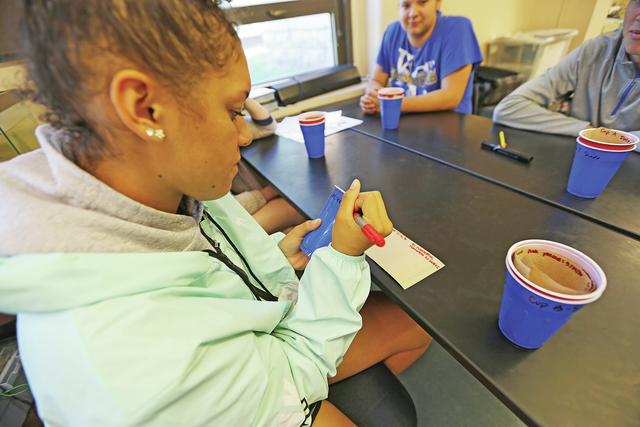MIAMI — The mosquitoes that can spread Zika are already buzzing among us. The U.S. government could use some help figuring out exactly where. ADVERTISING MIAMI — The mosquitoes that can spread Zika are already buzzing among us. The U.S.
MIAMI — The mosquitoes that can spread Zika are already buzzing among us. The U.S. government could use some help figuring out exactly where.
No experience is necessary for what the U.S. Department of Agriculture envisions as a nationwide experiment in citizen-science. Teenagers already have proven themselves up to the task in tryouts involving a small number of high school students and science teachers.
Now it’s time for the Invasive Mosquito Project to scale up and fast, since Zika has been linked to serious birth defects and health officials are preparing for the possibility of small outbreaks in the United States. But there’s little money in government budgets to track its spread.
“We don’t have a lot of data — good, solid data,” said John-Paul Mutebi, an entomologist with the U.S. Centers for Disease Control.
What the USDA is proposing is the kind of population survey not seen in the continental United States since World War II, when the country eradicated mosquito-borne viruses. In a 1945 film, the U.S. government encouraged school kids and scout troops to do their part in keeping their neighborhoods free from dengue and yellow fever.
Volunteers now are needed to collect mosquito eggs in their communities and upload the data to populate an online map, which in turn will provide real-time information about hot spots to help researchers and mosquito controllers respond.
Some local surveys have been revived as dengue fever and other viruses creep back into the country, carried in the blood of travelers and transmitted through mosquito bites.
But that data hasn’t been centralized, and the gaps are clear to CDC researchers, whose national maps only roughly show the possible spread of two disease-carrying mosquitoes.
The CDC’s maps are based on historical reports, recent research and surveys sent in February to mosquito control districts nationwide, but evidence remains thin for habitat estimates. They suspect that Aedes aegypti could carry Zika well beyond the Southeast during the summer, and the more cold-hardy Asian tiger mosquito could be biting into the Midwest and Northeast.
Both species are capable of spreading Zika, but experts have considered the Asian tiger less of a threat for triggering outbreaks than the Aedes aegypti.
The Invasive Mosquito Project is coordinated by Kansas-based USDA entomologist Lee Cohnstaedt, who has explored crowdsourcing as a budget-conscious way to sample mosquito populations and cites research supporting volunteers’ capabilities for collecting large-scale data. Now he’s pinning his hopes for consistent data collection on students needing to do their homework, year after year.
He’s thinking big: Participation from a fifth of U.S. schools. Adapting lesson plans for middle schools, scout troops and gardening clubs. Making mosquito surveys as common as public bird counts for conservation groups. Turning classroom routines into a life-long habit of mosquito vigilance.
Since high school biology teacher Noah Busch incorporated the USDA project into his lesson plans, his students in Manhattan, Kansas, have made the connection between news reports about Zika and the mosquito traps they set near tires or backyard swimming pools.
The equipment is nothing more than brown paper towels and dark-colored plastic party cups. Students insert the paper into the cups, fill the cups two-thirds of the way with water and place the cups around their homes. After about a week, they dry the towels and examine them for eggs, which look like tiny specks of dirt.
Classes verify their findings with the USDA, local researchers or mosquito control officials before uploading their results to the project’s website, which is part of a new central database for all federal citizen science activities.
In the past, Cohnstaedt could spend $150 or more a night to send one employee to trap mosquitoes. Crowdsourcing that effort has “saved a bunch” of money and “collected better data than we could have working alone,” he said in an email.
The Florida Keys Mosquito Control District wants the USDA project in three high schools this fall. The narrow island chain shares a national need for early warnings about invasions by Asian tiger mosquitoes or other species, executive director Michael Doyle said.
“Having these collections on different islands will alert us to any additional places where it’s trying to expand,” Doyle said.



